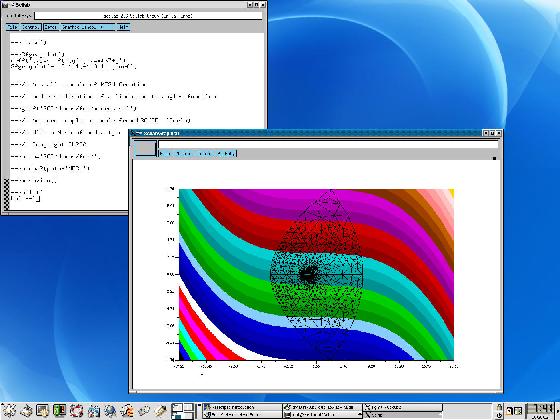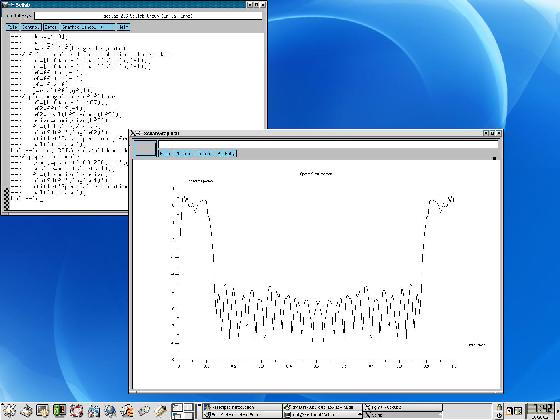Contents
Previous
Next
Scientists mathematical toolbox
Version : 2.6
Author(s) : INRIA (scilab@inria.fr)
License : scilab
Website :
http://www-rocq.inria.fr/scilab
Disk space required for installation is 89.57 Mb
After the package is installed it can be accessed using the command
/opt/lfa/startscilab
A shortcut will be installed in the KDE/GNOME desktop menu system,
as an entry in the Astronomy submenu
The following printable documents will be installed :
- /opt/lfa/doc/scilab/comm.pdf
- /opt/lfa/doc/scilab/internals.pdf
- /opt/lfa/doc/scilab/intro.pdf
- /opt/lfa/doc/scilab/lmi.pdf
- /opt/lfa/doc/scilab/manual.pdf
- /opt/lfa/doc/scilab/metanet.pdf
Summary
Developed at INRIA, Scilab has been developed for system control and
signal processing applications. It is freely distributed in source code
format (see the copyright file).
Scilab is made of three distinct parts: an interpreter, libraries
of functions (Scilab procedures) and libraries of Fortran and C
routines. These routines (which, strictly speaking, do not belong
to Scilab but are interactively called by the interpreter) are of
independent interest and most of them are available through Netlib. A
few of them have been slightly modified for better
compatibility with Scilab's interpreter.
A key feature of the Scilab syntax is its ability to handle
matrices: basic matrix manipulations such as concatenation, extraction
or transpose are immediately performed as well as basic
operations such as addition or multiplication. Scilab also aims at
handling more complex objects than numerical matrices. For instance,
control people may want to manipulate rational or
polynomial transfer matrices. This is done in Scilab by
manipulating lists and typed lists which allows a natural symbolic
representation of complicated mathematical objects such as transfer
functions, linear systems or graphs (see Section ??).
Polynomials, polynomials matrices and transfer matrices are also
defined and the syntax used for manipulating these matrices is
identical to that used for manipulating constant vectors and
matrices.
Scilab provides a variety of powerful primitives for the analysis
of non-linear systems. Integration of explicit and implicit dynamic
systems can be accomplished numerically. The scicos
toolbox allows the graphic definition and simulation of complex
interconnected hybrid systems.
There exist numerical optimization facilities for non linear
optimization (including non differentiable optimization), quadratic
optimization and linear optimization.
Scilab has an open programming environment where the creation of
functions and libraries of functions is completely in the hands of the
user (see Chapter ??). Functions are recognized as
data objects in Scilab and, thus, can be manipulated or created as
other data objects. For example, functions can be defined inside Scilab
and passed as input or output arguments of other
functions.
In addition Scilab supports a character string data type which, in
particular, allows the on-line creation of functions. Matrices of
character strings are also manipulated with the same syntax
as ordinary matrices.
Finally, Scilab is easily interfaced with Fortran or C subprograms.
This allows use of standardized packages and libraries in the
interpreted environment of Scilab.
The general philosophy of Scilab is to provide the following sort
of computing environment:
To have data types which are varied and flexible with a syntax
which is natural and easy to use.
To provide a reasonable set of primitives which serve as a basis
for a wide variety of calculations.
To have an open programming environment where new primitives are
easily added. A useful tool distributed with Scilab is intersci which
is a tool for building interface programs to
add new primitives i.e. to add new modules of Fortran or C code
into Scilab.
To support library development through ``toolboxes'' of functions
devoted to specific applications (linear control, signal processing,
network analysis, non-linear control, etc.)
Screenshots


Contents
Previous
Next


